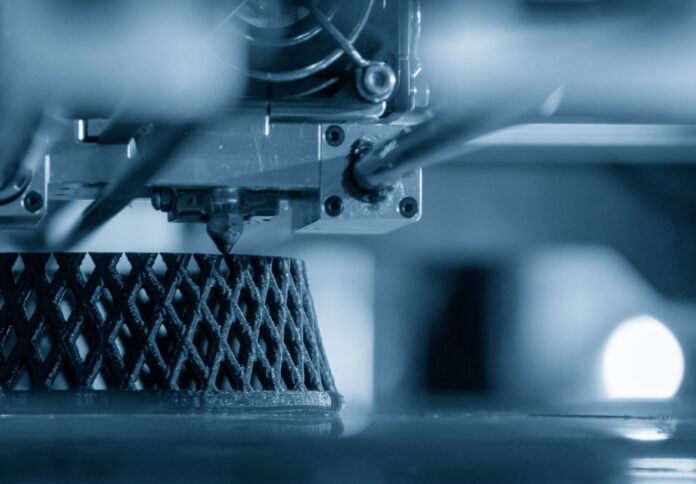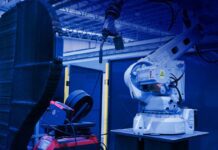
Researchers at Purdue University’s Applied Research Institute (PARI) are harnessing cutting-edge additive manufacturing technology to fabricate a fully functional prototype of a supersonic combustion ramjet, or scramjet.
This achievement is poised to revolutionise the hypersonics industry, streamlining prototyping and manufacturing processes while enhancing national security, the university said in a news release.
The initiative, spearheaded by Purdue’s Hypersonic Advanced Manufacturing Technology Center (HAMTC), marks a significant leap forward in the quest for affordable and efficient hypersonic propulsion systems.
The scramjet engine, capable of propelling aircraft at speeds exceeding Mach 5, represents a crucial advancement in aerospace technology.
Graduate research assistant Will DeVerter and senior test engineer Nick Strahan collaborated to develop the full-scale scramjet prototype using state-of-the-art additive manufacturing equipment housed within PARI’s Hypersonics and Applied Research Facility.
DeVerter highlighted the unique capabilities offered by Purdue’s resources, emphasising the seamless integration of manufacturing and testing processes.
Strahan elucidated the technical complexities inherent in scramjet functionality, likening the initiative to “lighting a candle in a hurricane.”
The challenge lies in sustaining combustion amidst air speeds surpassing Mach 2—a feat made possible through innovative combustor design and efficient fuel combustion.
Mark Lewis, president and CEO of PARI, underscored the significance of scramjets in hypersonic propulsion, citing their potential to propel missiles and aircraft through the atmosphere at unprecedented speeds.
Scramjets are “very simple in principle,” Lewis said, “but extremely complex in actual design,” which is why using additive manufacturing has been such a breakthrough.
Traditional methods of scramjet prototyping are both costly and time-intensive, often yielding scaled-down models for initial testing.
However, PARI’s enhanced manufacturing capabilities enable the printing of full-scale, production-ready prototypes, expediting the development process.
Michael Sangid, executive director of HAMTC, lauded the centre’s vertical integration approach, which facilitates rapid progression from raw material to functional prototype.
Central to the project’s success is the GE Concept Laser X Line 2000R, a cutting-edge metal printer renowned for its large-scale manufacturing capabilities.
By employing laser-powder bed fusion, the printer minimises part count while maximising design complexity – a critical factor in scramjet development.
Senior project manager David Bretz emphasised the project’s broader implications for national security and defence, citing its potential to bolster the nation’s hypersonics capabilities.
Moreover, student involvement underscores Purdue’s commitment to cultivating talent in aerospace engineering and hypersonics research.
Carson Slabaugh and Michael Sangid lead the faculty efforts on this project, which is funded by the Office of the Secretary of Defense Manufacturing Science and Technology Program.
Partnerships with the Naval Surface Warfare Center, Crane Division, and the National Security Technology Accelerator further augment the project’s scope and impact.




















